Introducing Solids to Baby + My Approach
11
Published Jul 18, 2020, Updated Jun 02, 2023
This post may include affiliate links. Thank you for your support.
Sharing tips for when to start your baby on solids, information on baby led weaning vs traditional weaning, what foods to start with and more.
One of my most requested topics lately (especially in my DMs on Instagram) revolves around Olivia and the baby food I’ve been making for her! I’ve been promising a full update so here it is! In this post I’m sharing how we introduced solids to Olivia, what we’re feeding her and why.
When to Start a Baby on Solids
Starting to feed your baby solids is such an exciting milestone and one that I was totally looking forward to with Olivia. As a food lover, introducing her to new foods and hearing her little mmmmms with every bite has been so much fun.
Most pediatricians recommend babies start solids between 4-6 months. That said, every baby is different. You know your baby best so trust your gut and do what feels right to you (with guidance from your pediatrician)!
Signs of Readiness
In addition to age, there are certain signs you want to look for before introducing solids.
- Can your baby hold their head up in an upright position without too much bobbing?
- Can your baby sit up with (or without) support?
- Has your baby lost the tongue thrust reflex?
- Does your baby put their hands or toys in their mouth?
- Has your baby shown interest in food (leaning forward and opening their mouth) or trying to grab food you’re eating?
These are all signs that your baby might be ready for some solids. As always, check with your pediatrician. If you get the green light, it’s go time!
Starting Solids with Olivia
Olivia started solids around 6 1/2 months. At her 6 month check-up our pediatrician mentioned that we should start solids soon, but I decided to wait a couple weeks because her whole feeding experience has been delayed a bit.
Here’s the backstory if you’re interested: Olivia was on a nasogastric feeding tube (NG tube) for six weeks after open heart surgery at 6 days old. We worked with a speech language pathologist to get her off the tube and January 1st we transitioned to bottles with thickened anti-reflux formula. We used the thickened formula for about 6 weeks, but throughout the whole process (while she was on the NG tube and while she was taking only bottles) I kept up with pumping and would often try to get her to latch after pumping so she could still practice nursing.
Around 3 1/2 months, she was swallowing well enough to start giving her breast milk in the bottles and I also started the process of nursing her. At first she wouldn’t latch on and would just cry when I offered. I used a variety of nipple shields and once she started latching with the nipple shield, I worked on weaning her off of it and soon she was nursing without it. It was a long process! There were good and bad days, but totally worth it because now she’s able to nurse and/or take bottles with expressed breast milk and she does both well. Most days she nurses for the feeds during the day and then takes a bottle with breast milk before bed.
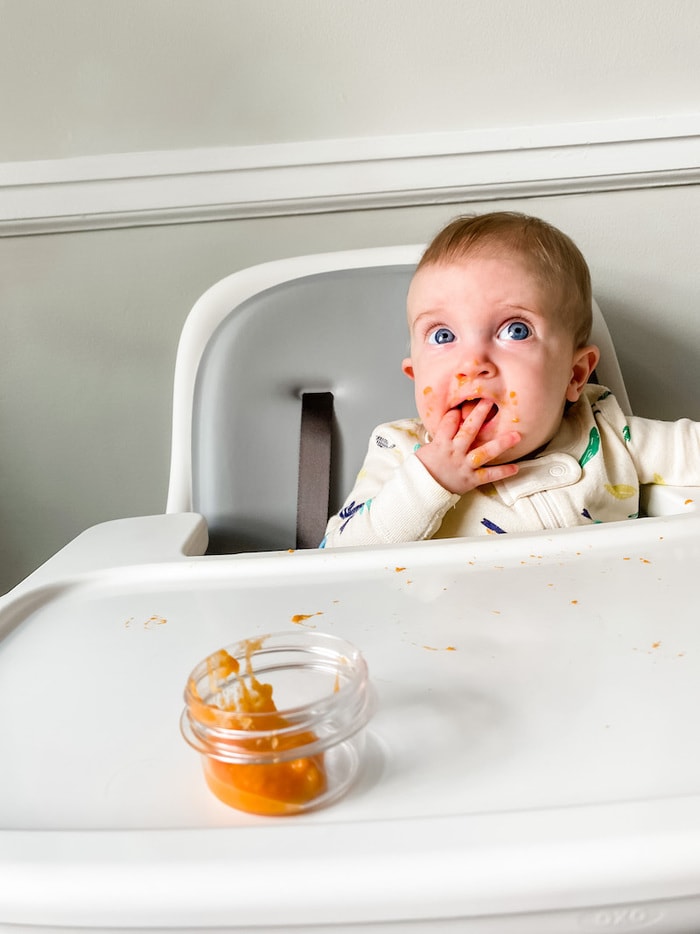
Anyhow, long story short, given Olivia’s feeding history I wasn’t in a rush to start solids. At 6 months I felt like she had only been nursing really well for about a month and I didn’t want to disrupt that. So that’s why we started solids at 6 1/2 months. At this point she was sitting up with assistance and starting to show interest in our food and drinks so we knew she was ready.
Baby Led Weaning
I feel like I can’t write this post without mentioning baby led weaning (BLW) because it’s so popular right now. BLW has been around for a while, but was officially named back in 2005 by Gill Rapley, author of the book Baby-Led Weaning. It seems like it’s been gaining popularity since and I see tons of parents trying it out! So what is it?
The basic concept is that when you start solids at 6 months, you skip purees and let your baby feed themselves with finger foods from the start. This gives the baby control over what (and how much) food they put in their mouth. I feel like people usually have one of two reactions to this… 1) that makes so much sense! or 2) how the heck is my baby supposed to get nutrients/feed themselves at 6 months? Let’s back up and talk about the whys behind baby led weaning…
According to registered dietician Clancy Cash Harrison, author of Feeding Baby, “Baby-led weaning supports the development of hand-eye coordination, chewing skills, dexterity, and healthy eating habits. It also offers babies an opportunity to explore the taste, texture, aroma, and color of a variety of foods.” It can also help babies regulate fullness on their own. It’s common for parents to just “finish off the jar of baby food” or sneak in a “few more bites” when the baby might actually be full already. Another benefit is that babies can join you at the table during meal times and eat similar foods with you instead of being fed different food at a separate time.
While I do really like a lot of the principles and reasoning behind baby led weaning, we’ve decided to take a more traditional approach with Olivia for a variety of reasons. I share more about what we’re doing below.
I think it’s also important to mention that baby led weaning isn’t for every baby. Some babies have special needs, are unable to pick up foods on their own and some babies just prefer purees. Despite what some sources may say, you don’t have to take an all or nothing approach. You can combine techniques and offer your baby purees and finger foods. Some babies will do fine having both at a meal while for others it might make sense to do purees at one meal and finger foods at another.

My Approach
We discussed starting solids with Olivia’s occupational therapist and together decided we should do a more traditional weaning approach by offering purees to start and adding in finger foods (like baby pancakes) when Olivia seemed ready.
The first solid food we offered was steamed and pureed sweet potato, with breast milk to thin it out. We offered this for a few days and then offered avocado pureed with breast milk, then mashed banana and apple puree. She took to all of these foods right away so we started adding in more foods and pretty quickly transitioned to purees that were thicker and chunkier.
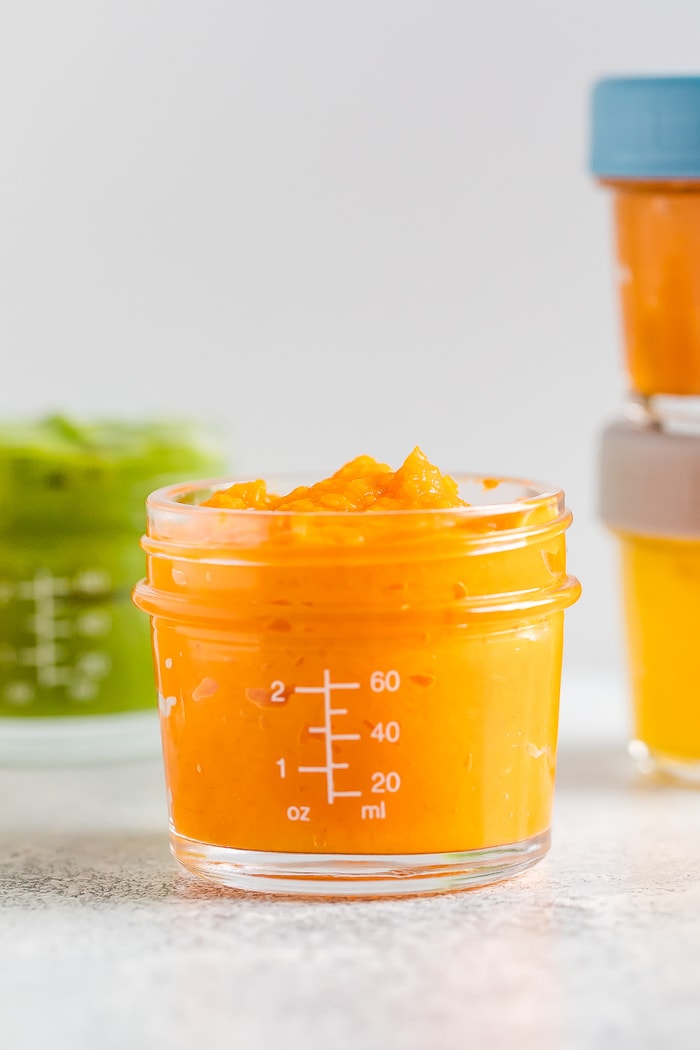
In the first couple weeks we only offered solids once a day and then once we saw how much she enjoyed eating we started a new schedule that involved 3 meals a day.
At 8 months we’re still on the same schedule with 4 breast milk feeds and 3 meals with solids a day. I don’t measure how much solid food she’s eating, but she is a really good eater. Often times I fill up her ezpz bowl and end up having to go back to the container for seconds or thirds. Girl loves to eat!
While we’re mostly focused on purees for nutrition at the moment I have been offering some soft, finger foods like avocado and banana. I’ve found that larger items are better because she can easily pick up them up. She often gets frustrated with smaller things like mashed blueberries because she doesn’t have her pincer grasp down yet and getting the food to her mouth takes too long.
She seems to really enjoy having us feed her with a spoon because it’s faster. That said, we do some spoon loading and let her bring the spoon to her mouth for practice, which she likes to do. We also have a couple little self feeders that you can put food in. I like putting frozen banana chunks in so she can practice feeding herself and the frozen banana feels good on her gums.
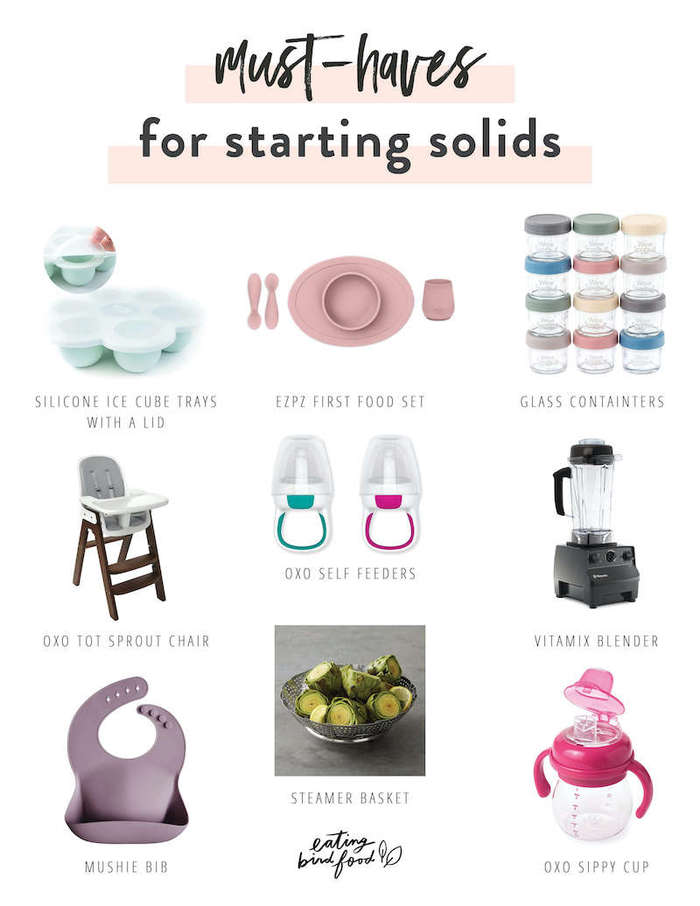
Must-Haves for Starting Solids
With starting solids I found quite a few items that have been super helpful. Everything from a blender and steamer basket for making homemade purees to small spoons and silicone bibs with pockets for catching food that doesn’t make it to Olivia’s mouth. I will say that early on I bought a Baby Brezza, which both steams and purees food in one container. People seem to love the Baby Brezza and I thought that it would make the process easier, but I actually didn’t like it. It was large and required that you peel and chop the fruits/veggies into small pieces before steaming and cooking. I have simply been using a steamer basket and blender.
- High chair – we have two high chairs, the OXO tot sprout chair that matches our dining room set and the Inglesina fast table chair that’s mostly for traveling, but we also use this on our kitchen island.
- Bibs – silicone bibs with pockets are awesome because they’re easy to clean and the pockets catch any food that doesn’t make it into their mouth. You honestly don’t need a ton of bibs. We have three: two of these roll-up bibs from OXO and this one from Mushie.
- bowl/plate – right now we’re using the ezpz first food set which comes with a bowl, a tiny cup and two tiny spoons. The bowl is nice because it suctions to the table or high chair tray and baby can reach into the bowl and grab food without it sliding around.
- Tiny cup – you can buy this as part of the set I mentioned above or separately. It’s a tiny cup for teaching babies how to drink out of a regular cup without a lid. It’s the perfect size for little hands and a great teaching cup, but can be a bit messy
- Tiny spoons – another thing that is part of the set I mentioned above, but you can also buy these separately. Of everything in the set, I think the spoons are my favorite. They’re shallow, small, soft and easy for Olivia to grab with her hand and feed herself.
- Self feeders – We have this self feeder and the OXO self feeders that you can add whole fresh foods to introduce solids or add frozen fruit to soothe teething gums. Olivia loves these with frozen banana chunks inside.
- Sippy cup – Right now we’re using the tiny cup as well as an OXO sippy cup. I’m not in love with the sippy cup because Olivia seems more interested in chewing on the lid than sipping. She’s seemed really interested in straws lately so I want to find a sippy cup with a straw.
- Steamer basket – Most foods need to be steamed so having a steamer basket is key. I have a really basic steamer basket that fits in most pots.
- Blender – I’ve been using my Vitamix blender and love how smooth it can make the purees. A few people have mentioned that an immersion blender works great too.
- Silicone ice cube trays – in the beginning I would make large batches of pureed food and pour it into a silicone ice cube tray with a lid to freeze for later. It was perfect when Olivia wasn’t eating big portions because each cube is about 1 ounce. I still use these occasionally but I’ve been using larger storage containers more often because Olivia eats 2-4 ounces of food at a meal.
- Storage containers – As soon as you start making homemade baby food you realize that you need lots of little containers. A friend loaned me a bunch of plastic storage containers for keeping homemade baby food and I also invested in these glass containers that are freezer safe.
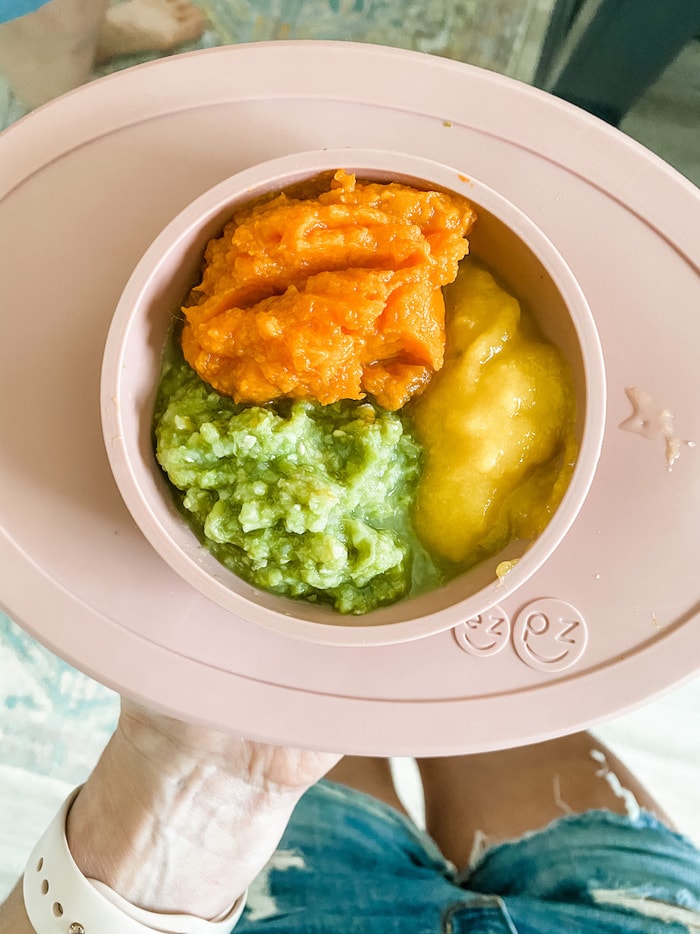
Stages of Baby Food
I definitely recommend checking out this article which breaks down the different stages of foods and gives guidelines of when to start them.
- Stage 1 (around 4-6 months) – single ingredient foods that are pureed into a very thin consistency with no chunkiness whatsoever
- Stage 2 (around 6-8 months) – slightly thicker consistency and typically includes food combinations
- Stage 3 (around 9-12 months) – thick blended foods with chewable chunks or small cut up pieces of easily chewed food
Foods We’ve Tried So Far
I’ve been having a lot of fun making baby food and Olivia’s liked everything we’ve given her except for prunes (which we gave her a couple times to help with constipation). We’ve been doing a lot of food purees (or mashes) made with either steamed or fresh fruit and veggies. Even if we’re feeding her single food purees, I usually pair the foods together in her bowl for each meal. I’ve also been experimenting with making my own baby food combinations and I have a post coming soon with recipes! Here are the foods we’ve tried so far just to give you an ideas.
- sweet potato – steamed or baked, cooled, mashed or pureed with breast milk to thin if needed. See my sweet potato puree recipe here.
- avocado – mashed or pureed with breast milk to thin if needed
- banana – mashed with breast milk to thin if needed or frozen chunks placed in the self feeder
- apple – steamed and pureed, basically applesauce.
- mango – fresh or frozen, peeled and pureed. I buy frozen chunks, steam them and then puree
- pineapple – fresh or frozen (thawed), steamed and pureed. I buy frozen chunks, steam them and then puree
- asparagus – steamed and pureed
- carrot – steamed and pureed. (See my recipe for carrot baby food.)
- pear – steamed, peeled and pureed (you don’t have to steam if the pear is super ripe)
- peach – steamed, peeled and pureed (you don’t have to steam if the peach is super ripe)
- blueberries – fresh or frozen (thawed), pureed (you can steam them first if you want to soften the skin
- pumpkin – steamed and pureed. (See my recipe for pumpkin puree.)
- green beans – fresh or frozen (thawed), pureed. We’ve been using fresh green beans from Isaac’s parents garden.
- peas – fresh or frozen (thawed), pureed
- spinach – steamed and pureed with another fruit/veggie
- butternut squash – fresh or frozen (thawed), steamed and pureed
- yellow squash – steamed and pureed
- oatmeal – You can use baby oatmeal or make you own by pulsing oats into a fine powder (basically oat flour) before cooking in water. Since Olivia is okay with more textured food now, I do quick oats cooked in water and use breast milk to thin it out once cooked. I usually serve it alongside a pureed fruit for breakfast. Check out my post all about baby oatmeal for more info on how I make and serve this.
- ground flaxseed – I add this to blueberry or mango puree to thicken it up while also amping up the nutrition. It also seems to help with constipation.
- chia seeds – I use chia to make chia pudding with breast milk and to thicken purees that are too runny.
- peanut butter – I mix a small amount into oatmeal and make sure it was totally combined without any pockets of thick peanut butter
- whole milk yogurt – I like plain full-fat yogurt
- egg yolk – hard boiled and pureed with breast milk
A couple notes: You can add breastmilk or formula to thin out any of the purees if needed. With some fruits and veggies it’s recommended that you strain them to make the puree super smooth for stage 1 eaters, but because we started Olivia on solids at 6 months I haven’t felt the need to strain any of the foods I’ve given her.
Adding Aromatic Spices/Herbs
Although you shouldn’t add salt or sugar to baby food, it’s a good idea to add flavor from spices and herbs so your baby can get used to enjoying flavorful food. From my research I’ve found that introducing aromatic spices to babies that 6 months or older is fine. Of course, you want to watch for signs of allergic reactions just like with any other food. Here are some ideas:
- fresh or dried herbs like basil, mint, rosemary, dill, oregano
- pepper, garlic, lemon
- ginger, cinnamon, nutmeg
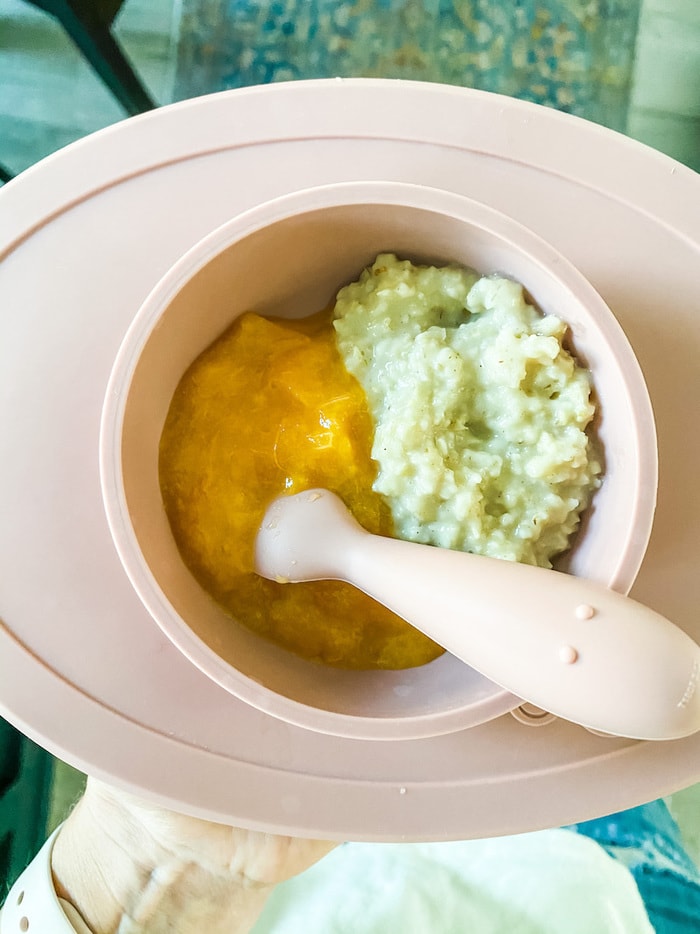
Known Food Allergens
One of the most important things to be aware of when introducing solids to babies are common allergens. You can still give your baby these foods, just be extra aware when you do, noting any reactions. Foods like diary, eggs, peanuts, tree nuts, wheat, soy and shellfish should be introduced gradually after less allergenic foods have been tolerated. The previous recommendation was to wait on these foods, but that as since changed and in fact, delaying the introduction of these foods may increase the risk of a child developing allergies.
When introducing foods it can be helpful to introduce only one food every three to five days so you can watch for any signs of allergic reactions. A reaction could show up almost immediately or a few days after so it’s recommend to introduce one food at a time when starting out so you can track what may be causing a reaction in your baby. Reactions include: hives or rashes, itching, shortness or breath or more serious reactions like vomiting or swelling of the lips and tongue.
One food that is off limits until a baby is at least 1 year old is honey because of the risk of infantile botulism.
Additional Helpful Resources
- Yummy Toddler Food – this site has a ton of recipes for babies and toddlers
- Feeding Littles – I have friends who have done this course and loved it. It’s a great resource if you want to do baby led weaning.
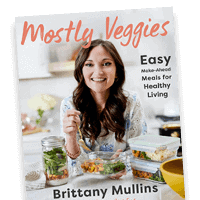
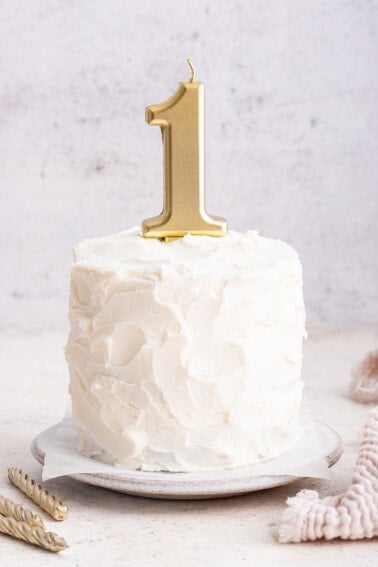

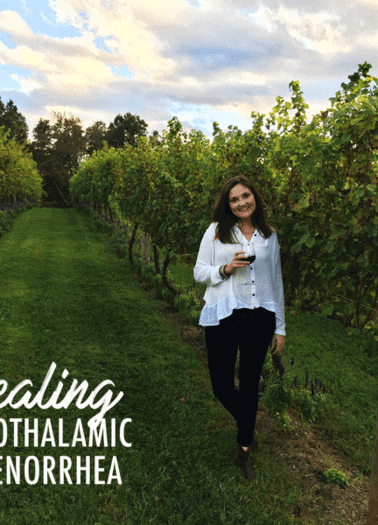
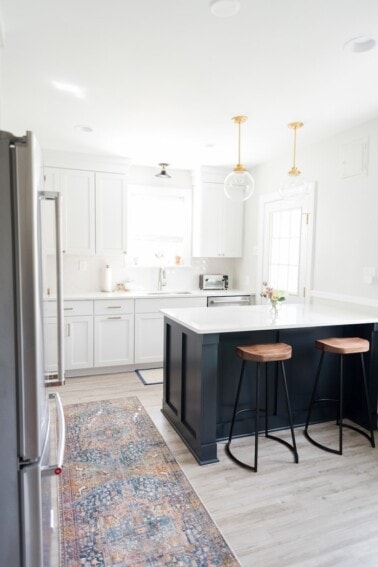
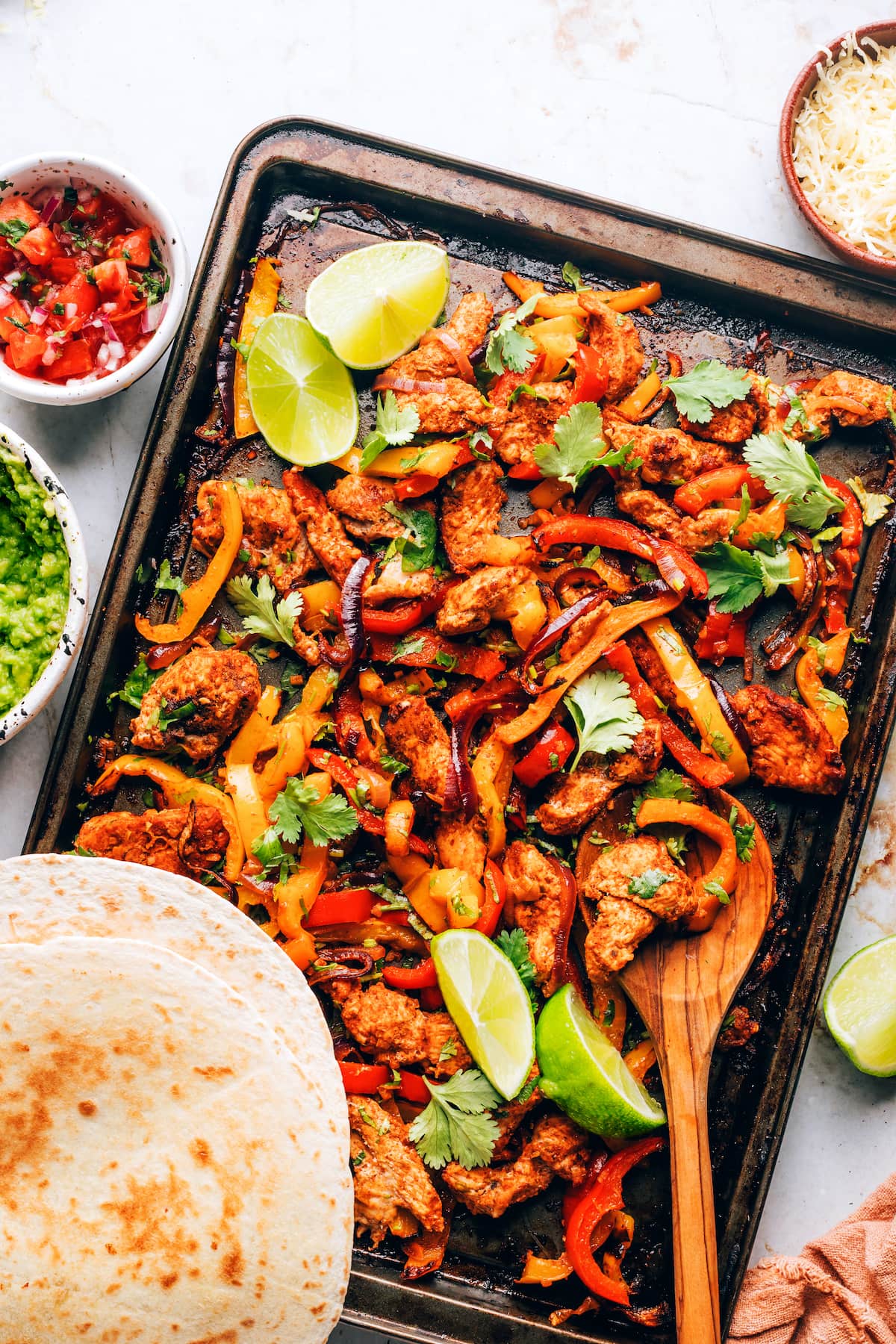






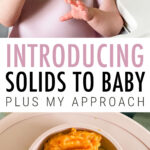
Thank you for this post! It was after reading that I realized we probably need some silicone bibs and fast. I was giving myself headaches trying to wash chunks of sweet potato out of fabric bibs. I got a vitamix specifically to make baby food and boy am I using it almost every day! I make a huge batch of baby food for the week in it, then use the immersion blender to puree any chunks I’ve missed. Whatever is leftover goes into my morning breakfasts so we end up eating almost the same things
Thank you for sharing! We’re weeks away from the 6 month mark and I’ve been having nightmares about introducing solids. It’s so great to read your approach and experience with Olivia! Looking forward to some baby food recipes.
You’re so welcome, Amber! I’m glad this post is helpful for you. 🙂
Thank you for sharing!! This is really useful information. Baby boy is approaching the 6 month mark and I was supper confused were to start. Looking forward to see the recipes that you had for Olivia.
KUDOS TO YOU, you should be SO INCREDIBLY proud of yourself – you’re the only other person I know who persevered with pumping and trying to nurse, and succeeded. My son was born three weeks early and was in the NICU for a week. They of course gave him bottles (of my breastmilk) and the nightmare began. Once they have a bottle you’re screwed. My son was about the same age as your daughter when I finally, FINALLY was able to rid myself of being tethered to a pump and was nursing successfully. It was the hardest thing I’ve ever done. I then enjoyed it SO MUCH that I didn’t start my son on solids till about 10 months! I just loved it so much and my son was doing so well with just the breastmilk. I’m actually glad I waited because I didn’t have to do as much purées and mashing. Enjoy this time with your baby – mine is eight years old now!
Ahh thank you, Mindy! <3
I’m a long time reader but never commented. This post is wonderful!!!! My youngest just turned 6 months and I have never heard of baby lead weaning. This is fascinating. Also I never thought to add spices to my baby’s food! I love these ideas. I always appreciate your honesty in posts. Things are not always perfect and you are super relatable. I also had HA and you helped get me through it!
Ahh I’m so glad this post has been helpful for you, Kimberly!! I appreciate you reading it. 🙂
I’ve been getting bombarded with ads for food pouches containing free range turkey, wild caught salmon, etc. My pediatrician recommends just fruit, veggies and grains. I noticed you didn’t mention anything about meat/seafood for Olivia – what is your take? Wait until she is ready for stage 3 and just give the real thing?
thanks for sharing
you are explaining everything in detail about BLW.